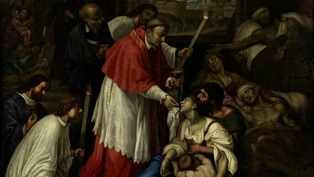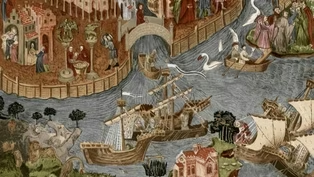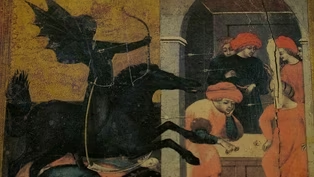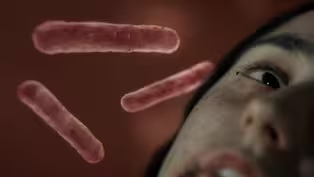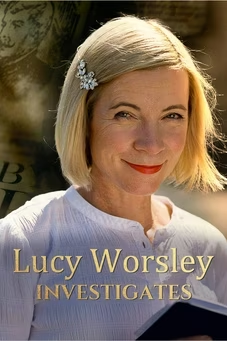
Could This Be the Black Death’s Earliest Victim?
Clip: Season 22 Episode 10 | 3m 21sVideo has Closed Captions
Ancient gravestones in Kyrgyzstan hint the Black Death began long before it reached Europe.
A spike in gravestones from 1338 in Kyrgyzstan led historian Philip Slavin to theorize that the Black Death may have begun years before it swept through Europe. Inscriptions mentioning “pestilence” begs the question: were these the earliest known victims of the plague?
Problems playing video? | Closed Captioning Feedback
Problems playing video? | Closed Captioning Feedback
SECRETS OF THE DEAD is made possible, in part, by public television viewers.

Could This Be the Black Death’s Earliest Victim?
Clip: Season 22 Episode 10 | 3m 21sVideo has Closed Captions
A spike in gravestones from 1338 in Kyrgyzstan led historian Philip Slavin to theorize that the Black Death may have begun years before it swept through Europe. Inscriptions mentioning “pestilence” begs the question: were these the earliest known victims of the plague?
Problems playing video? | Closed Captioning Feedback
How to Watch Secrets of the Dead
Secrets of the Dead is available to stream on pbs.org and the free PBS App, available on iPhone, Apple TV, Android TV, Android smartphones, Amazon Fire TV, Amazon Fire Tablet, Roku, Samsung Smart TV, and Vizio.
Buy Now
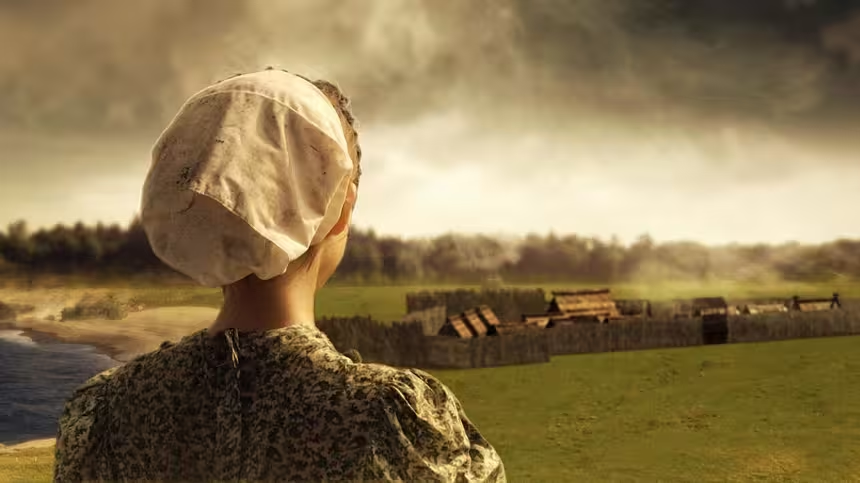
Providing Support for PBS.org
Learn Moreabout PBS online sponsorship-An increase in the number o headstones in one specific year caught Philip's attention.
-Then I just realized that there was one year when you had a remarkable spike in the number of annually chiseled headstones.
The year 1338, 1339 we have this remarkable spike.
-These headstones were dated almost a full decade before this wave of the Black death ravaged Europe.
-I got even more excited when I realized that there were several of those headstones.
The ten headstones were specifically mentioning mawtn or pestilence as the cause of the death of these people.
I say: Well.
Wow.
That must be it.
That must be really, really it.
So, I got really, really, really excited.
-Philip had identified what he believed could be Black Death Patient Zero The earliest known victim of the 14th century Black Death pandemic.
But to be certain that this pestilence was actually the Black Death, he would require scientific proof in the form of plague victims' DNA.
The graves that these ancient headstones had marked were excavated more than a century ago.
But amazingly, the skeletons were still in storage and available for scientific analysis.
-During the excavations, there were 88 graves opened at Kara-Djigach.
And those graves contained 94 skeletons.
Now, some of those skeletons were luckily buried in those graves that ar associated with the plague years And thankfully, some of those skulls were actually taken and were sent to Saint Petersburg.
That's how they ended up there.
At a later stage, they were transferred to the Kunstkamera Museum.
-And then, Philip experienced an even more remarkable coincidence.
-Phil Slavin, who gave a talk at our institute, we talked about historical analysis that he did on gravestones from a cemetery from Kyrgyzstan, close to Bishkek.
And when we talked about it he had also said that he thinks that the skulls that were excavated were actually brought to St.
Petersburg to the Kunstkamera Museum.
And fortunately, I knew the curators from the museum.
And then within a few weeks, we could actually assemble a team of people from our lab that actually went t St.
Petersburg to sample teeth.
-As soon as the human remains arrived from Russia, Dr.
Maria Spyrou and her team at the archaeogenetics department of the University of Tubingen started testing the teeth for microbial DNA.
They were looking for evidence that the so-called pestilence that killed the people buried in these graves was indeed the plague that swept through Europe.
As these graves predated the previous earliest known victims of the Black Death by years, Philip knew that if Maria could positively identify that they had died of plague, it would herald the discovery of a likely Black Death Patient Zero.
Video has Closed Captions
Clip: S22 Ep10 | 1m 57s | The haunting journal of Agnolo di Tura reveals the horrors of the Black Plague. (1m 57s)
How the Black Death Set Sail for Europe
Video has Closed Captions
Clip: S22 Ep10 | 1m 5s | In 1347, ships reached Sicily with the Black Death. In a year, it spread across Europe to England. (1m 5s)
The Pandemic That Killed Half of Europe
Video has Closed Captions
Clip: S22 Ep10 | 1m 28s | The Black Death may have killed nearly 50 percent of the Europe's population. (1m 28s)
Video has Closed Captions
Preview: S22 Ep10 | 32s | Scientists study medieval bubonic plague victims in hopes of preventing future outbreaks. (32s)
Providing Support for PBS.org
Learn Moreabout PBS online sponsorshipSupport for PBS provided by:
SECRETS OF THE DEAD is made possible, in part, by public television viewers.
